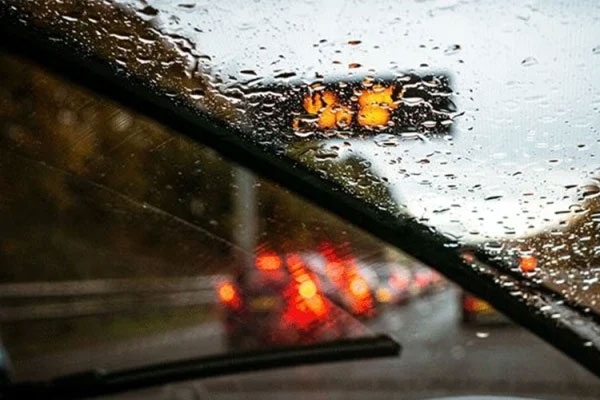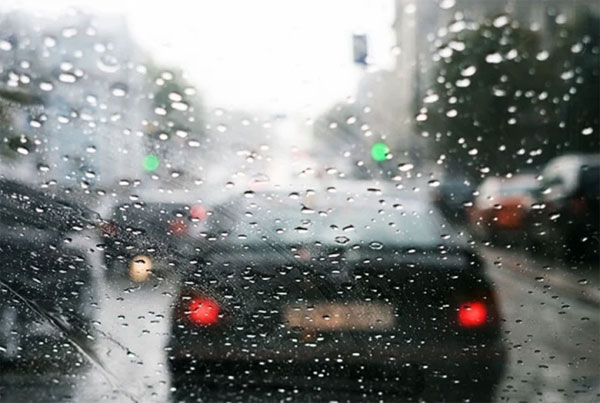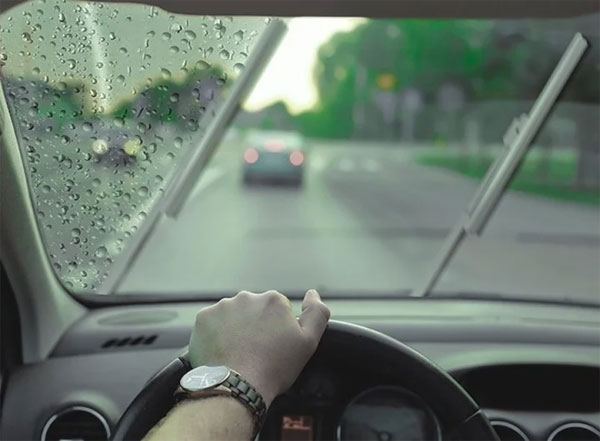It’s raining heavily, making it difficult for drivers to observe and anticipate situations. Moreover, driving in heavy rain can lead to potential risks for the vehicle such as flooding and engine failure. To avoid unfortunate incidents, drivers need to pay attention to certain aspects when driving in heavy rain.
Drive slower than normal by at least 5 – 10 km/h
When it’s raining and the road is slippery, the car’s braking system will be less effective. Drivers need to drive slower than usual to handle road situations in a timely manner, such as avoiding manhole covers and sewer grates…
 (Illustrative Image)
(Illustrative Image)
According to experts, drivers should drive at a speed that is lower than normal by at least 5 – 10 km/h when driving in heavy rain. For a road segment where the normal speed is 60 km/h, drivers should only drive at around 50 km/h when it’s raining heavily.
Always turn on the headlights when it’s raining
Heavy rain can reduce the visibility of drivers. Therefore, always turn on the headlights when it’s raining. When the lighting system is turned on, the rear warning lights will also activate. The rear lights increase the observation range of drivers behind, helping to avoid unfortunate accidents due to limited visibility.
Avoid sudden braking
 (Photo: 2GB)
(Photo: 2GB)
When driving in heavy rain, drivers should proactively reduce speed and brake early in necessary situations. This is because the slippery road will result in longer braking distances. Additionally, sudden braking in heavy rain can cause the tires to skid, leading to loss of control and making it difficult for the following driver to react in time.
Maintain a safe distance from the vehicle in front
 (Photo: eTags)
(Photo: eTags)
Driving too close to the vehicle in front is one of the dangerous mistakes when driving in heavy rain. Increasing the safe distance from the vehicle in front allows the driver to have time to stop or adjust the speed due to limited visibility.
Avoid driving parallel to other vehicles
When driving in heavy rain, many cars are splashed with water by other vehicles, causing temporary “blindness” for the driver. Therefore, when traveling on roads, especially highways, in heavy rain, minimize driving parallel to other vehicles. Only overtake and allow overtaking in open areas with few water puddles to avoid being splashed or splashing other vehicles.
Downshift, maintain a steady throttle
If you are driving a manual transmission car, you should drive in a lower gear, which provides high pulling force. This helps the car easily overcome unexpected obstacles on the road or accelerate when needed. Moreover, driving in a lower gear enhances the exhaust gas push force, avoiding water from entering the exhaust pipe.
When wading through flooded roads, maintain a steady throttle or slightly increase throttle. In cases where it is not possible to drive fast, do not reduce the throttle but maintain a steady throttle while pressing the brake. This helps stabilize the exhaust airflow and prevents water from entering the radiator grille and air intake.
Absolutely avoid stomping on the accelerator when driving in heavy rain. Stomping on the accelerator will create significant inertia and may cause waves, allowing water to enter the radiator grille and air intake.
Stop if it’s raining too heavily
Driving in very heavy rain is extremely dangerous, as heavy raindrops will significantly reduce visibility even when the wipers are operating at full capacity. Heavy rain combined with strong winds can also lead to broken or fallen trees along the road. To ensure safety, when it’s raining heavily, find a safe place to take shelter and wait for the situation to improve before continuing the journey.
According to VTC




































